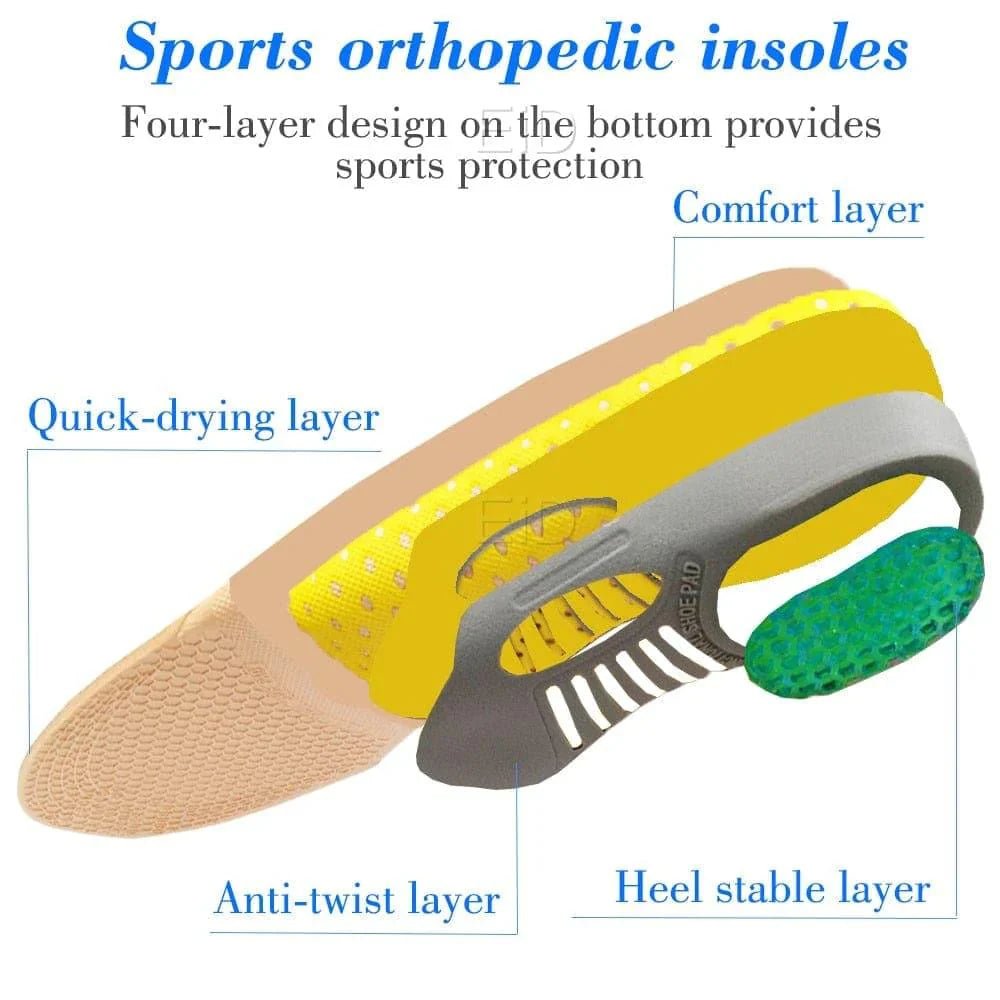Have you ever noticed how a small pebble in your shoe can ruin your entire day? Now imagine the impact of years of walking, running, and standing with improper foot support. It’s no wonder so many people suffer from foot, knee, hip, and even lower back pain.
The solution is simpler (and cheaper) than you think: Orthopedic Insoles.
Let’s break down why they’re essential for anyone who values comfort, long-term joint health, and an active lifestyle.
What Are Orthopedic Insoles?
Orthopedic insoles are specially designed inserts that go inside your shoes.
Unlike regular insoles, they’re engineered to:
-
Correct abnormal walking patterns (gait)
-
Distribute body weight more evenly
-
Provide arch support
-
Absorb shock
-
Reduce strain on your joints
Whether you’re dealing with plantar fasciitis, flat feet, or just general foot fatigue, orthopedic insoles can make every step feel lighter and easier.
How Do They Work?
Every foot is different—some arches are high, some are flat, and some are somewhere in between.
Orthopedic insoles work by:
-
Aligning the Foot: They guide your foot into the correct position, preventing inward or outward rolling.
-
Reducing Pressure Points: Distributing pressure evenly reduces the strain on your heels, balls of your feet, and toes.
-
Supporting Arches: They help hold up fallen arches, which can prevent knee, hip, and back problems.
With proper support, your entire body moves better—from the ground up.
Signs You Might Need Orthopedic Insoles
-
Chronic foot pain (especially heel pain)
-
Knee or hip discomfort
-
Frequent ankle sprains
-
Lower back pain
-
Standing for long hours
-
Flat feet or extremely high arches
-
Shoes that wear out unevenly
If you experience any of these symptoms, insoles might be the simple solution you’ve been overlooking.
Key Benefits of Orthopedic Insoles
✅ Pain Relief
Say goodbye to foot, knee, and lower back pain caused by poor alignment.
✅ Improved Posture
Proper foot support leads to better posture and less strain on your spine.
✅ Enhanced Athletic Performance
Run faster, jump higher, and move with less effort.
✅ Long-Term Joint Health
Protect your knees, hips, and back from future wear and tear.
✅ Better Shoe Fit
Insoles can make uncomfortable shoes feel like custom-made slippers.
Who Can Benefit from Orthopedic Insoles?
-
Runners and athletes
-
Healthcare workers
-
Retail employees
-
Teachers
-
Delivery drivers
-
Seniors
-
Anyone who stands or walks for long periods
Basically, if you have feet—you can benefit from orthopedic insoles.
Orthopedic Insoles vs. Regular Insoles
| Feature | Regular Insoles | Orthopedic Insoles |
|---|---|---|
| Comfort | Temporary cushion | Cushion + structural support |
| Durability | Wears out quickly | Lasts longer |
| Pain Relief | Minimal | Significant |
| Foot Alignment | No | Yes |
| Custom Fit | No | Some models do |
How to Choose the Best Orthopedic Insoles
1. Arch Support:
Know your arch type—flat, neutral, or high—and choose an insole that matches.
2. Cushioning:
Look for memory foam or gel padding for extra comfort.
3. Material:
Breathable, moisture-wicking materials keep your feet dry and healthy.
4. Shoe Compatibility:
Some insoles are thinner for dress shoes; others are thicker for athletic footwear.
5. Special Features:
Look for features like anti-bacterial coatings or heel cups if needed.
Brands like Dr. Scholl’s, Superfeet, and ProFoot are highly recommended for their comfort and durability.
Tips for Getting the Most Out of Your Insoles
-
Break Them In: Wear them for an hour a day at first, gradually increasing.
-
Replace Regularly: Most insoles last 6–12 months with daily use.
-
Use in All Shoes: Transfer them between shoes for consistent support.
-
Combine with Good Footwear: Insoles can't fix everything if your shoes are old or poorly designed.
Real User Experiences
“After years of struggling with plantar fasciitis, I finally found relief with orthopedic insoles. I can walk for hours now without any pain.”
“I work 10-hour shifts on concrete floors. These insoles were a total game-changer.”
“My knees used to hurt after every run. Since switching to insoles, no more pain and my times have improved too!”
FAQs About Orthopedic Insoles
Q: Do I need a prescription for orthopedic insoles?
No. While custom orthotics require a doctor’s visit, many excellent over-the-counter insoles work wonders.
Q: Can I wear them during workouts?
Absolutely. They’re designed to enhance performance and reduce injury risk.
Q: How long do orthopedic insoles last?
Most last 6–12 months, depending on usage.
Final Thoughts
Your feet carry you through life—why not give them the support they deserve?
Orthopedic Insoles are a simple, affordable way to improve your daily comfort, prevent injuries, and even boost your athletic performance.
Step into a healthier, pain-free future—one stride at a time.
👟 Tired of foot pain slowing you down? Shop our best-selling Orthopedic Insoles today and feel the difference with every step!

